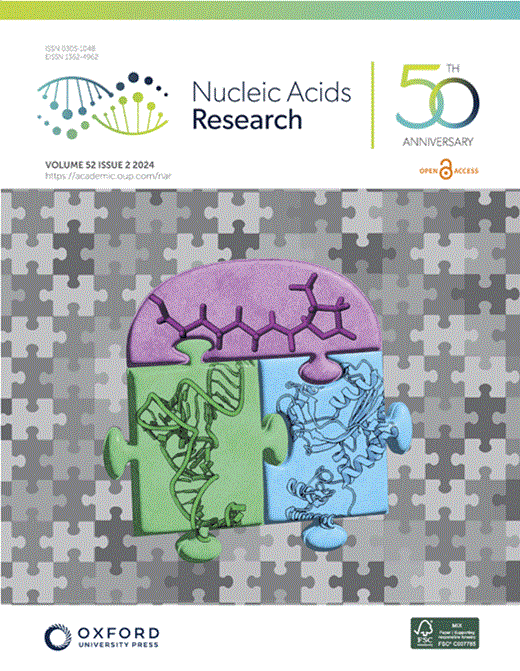Selict-seq profiles genome-wide off-target effects in adenosine base editing
IF 16.6
2区 生物学
Q1 BIOCHEMISTRY & MOLECULAR BIOLOGY
引用次数: 0
Abstract
Adenosine base editors (ABEs) facilitate A·T to G·C base pair conversion with significant therapeutic potential for correcting pathogenic point mutations in human genetic diseases, such as sickle cell anemia and β-thalassemia. Unlike CRISPR–Cas9 systems that induce double-strand breaks, ABEs operate through precise deamination, avoiding chromosomal instability. However, the off-target editing effects of ABEs remain inadequately characterized. In this study, we present a biochemical method Selict-seq, designed to evaluate genome-wide off-target editing by ABEs. Selict-seq specifically captures deoxyinosine-containing single-stranded DNA and precisely identifies deoxyadenosine-to-deoxyinosine (dA-to-dI) mutation sites, elucidating the off-target effects induced by ABEs. Through investigations involving three single-guide RNAs, we identified numerous unexpected off-target edits both within and outside the protospacer regions. Notably, ABE8e(V106W) exhibited distinct off-target characteristics, including high editing rates (>10%) at previously unreported sites (e.g. RNF2 and EMX1) and out-of-protospacer mutations. These findings significantly advance our understanding of the off-target landscape associated with ABEs. In summary, our approach enables an unbiased analysis of the ABE editome and provides a widely applicable tool for specificity evaluation of various emerging genome editing technologies that produce intermediate products as deoxyinosine.求助全文
约1分钟内获得全文
求助全文
来源期刊

Nucleic Acids Research
生物-生化与分子生物学
CiteScore
27.10
自引率
4.70%
发文量
1057
审稿时长
2 months
期刊介绍:
Nucleic Acids Research (NAR) is a scientific journal that publishes research on various aspects of nucleic acids and proteins involved in nucleic acid metabolism and interactions. It covers areas such as chemistry and synthetic biology, computational biology, gene regulation, chromatin and epigenetics, genome integrity, repair and replication, genomics, molecular biology, nucleic acid enzymes, RNA, and structural biology. The journal also includes a Survey and Summary section for brief reviews. Additionally, each year, the first issue is dedicated to biological databases, and an issue in July focuses on web-based software resources for the biological community. Nucleic Acids Research is indexed by several services including Abstracts on Hygiene and Communicable Diseases, Animal Breeding Abstracts, Agricultural Engineering Abstracts, Agbiotech News and Information, BIOSIS Previews, CAB Abstracts, and EMBASE.
 求助内容:
求助内容: 应助结果提醒方式:
应助结果提醒方式:


